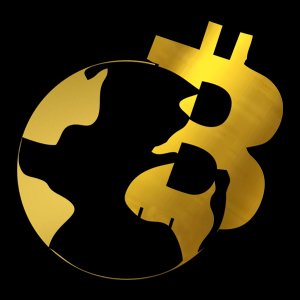Bitget: Top 4 toàn cầu về khối lượng giao dịch hàng ngày!
Thị phần BTC63.08%
Niêm yết mới trên Bitget : Pi
BTC/USDT$108392.13 (-2.31%)Chỉ số Sợ hãi và Tham lam66(Tham lam)
Chỉ số altcoin season:0(Bitcoin season)
Coin được niêm yết trên Thị trường sớmSOONNEWTổng dòng tiền ròng Bitcoin spot ETF +$211.7M (1 ngày); +$3.13B (7 ngày).Gói quà chào mừng dành cho người dùng mới trị giá 6200 USDT.Nhận ngay
Giao dịch mọi lúc, mọi nơi với ứng dụng Bitget. Tải xuống ngay
Bitget: Top 4 toàn cầu về khối lượng giao dịch hàng ngày!
Thị phần BTC63.08%
Niêm yết mới trên Bitget : Pi
BTC/USDT$108392.13 (-2.31%)Chỉ số Sợ hãi và Tham lam66(Tham lam)
Chỉ số altcoin season:0(Bitcoin season)
Coin được niêm yết trên Thị trường sớmSOONNEWTổng dòng tiền ròng Bitcoin spot ETF +$211.7M (1 ngày); +$3.13B (7 ngày).Gói quà chào mừng dành cho người dùng mới trị giá 6200 USDT.Nhận ngay
Giao dịch mọi lúc, mọi nơi với ứng dụng Bitget. Tải xuống ngay
Bitget: Top 4 toàn cầu về khối lượng giao dịch hàng ngày!
Thị phần BTC63.08%
Niêm yết mới trên Bitget : Pi
BTC/USDT$108392.13 (-2.31%)Chỉ số Sợ hãi và Tham lam66(Tham lam)
Chỉ số altcoin season:0(Bitcoin season)
Coin được niêm yết trên Thị trường sớmSOONNEWTổng dòng tiền ròng Bitcoin spot ETF +$211.7M (1 ngày); +$3.13B (7 ngày).Gói quà chào mừng dành cho người dùng mới trị giá 6200 USDT.Nhận ngay
Giao dịch mọi lúc, mọi nơi với ứng dụng Bitget. Tải xuống ngay




Giá RealLinkREAL
VND
Chưa niêm yết
₫160.96VND
+0.37%1D
Giá RealLink (REAL) tính theo là ₫160.96 VND tính đến 09:03 (UTC) hôm nay.
Dữ liệu được lấy từ nhà cung cấp bên thứ ba. Trang này và thông tin được cung cấp không xác nhận cho bất kỳ loại tiền điện tử cụ thể nào. Bạn muốn giao dịch các coin đã niêm yết? Nhấp vào đâyĐăng ký
Chuyển đổi REAL sang VND
REAL
VND
1 REAL = 160.96 VND. Giá hiện tại để chuyển đổi 1 RealLink (REAL) sang VND là 160.96. Tỷ giá chỉ mang tính tham khảo. Vừa mới cập nhật.
Bitget cung cấp phí giao dịch thấp nhất trong số các sàn giao dịch lớn. Cấp VIP của bạn càng cao, mức phí càng ưu đãi.
Biểu đồ giá RealLink (REAL/VND)
Cập nhật mới nhất vào 2025-05-24 09:03:38(UTC+0)
Vốn hóa thị trường:--
Vốn hóa thị trường pha loãng hoàn toàn:--
Khối lượng (24h):₫2,371,992,002.66
Khối lượng 24h / Vốn hóa thị trường:0.00%
Giá cao 24h:₫162.5
Giá thấp 24h:₫159.14
Cao nhất mọi thời đại:₫9,604.26
Thấp nhất mọi thời đại:₫0.5191
Nguồn cung lưu hành:-- REAL
Tổng nguồn cung:
552,148,975REAL
Tỷ lệ lưu hành:0.00%
Nguồn cung tối đa:
--REAL
Giá bằng BTC:0.{7}5729 BTC
Giá bằng ETH:0.{5}2425 ETH
Giá khi bằng vốn hóa thị trường BTC:
--
Giá khi bằng vốn hóa thị trường ETH:
--
Hợp đồng:--
Bạn nghĩ giá của RealLink hôm nay sẽ tăng hay giảm?
Tổng số phiếu bầu:
Tăng
0
Giảm
0
Dữ liệu bỏ phiếu được cập nhật sau mỗi 24 giờ. Nó phản ánh dự đoán của cộng đồng về xu hướng giá của RealLink và không nên được coi là lời khuyên đầu tư.
Báo cáo phân tích AI về RealLink
Điểm nổi bật của thị trường tiền điện tử hôm nayXem báo cáo
Giá RealLink tính bằng VND hôm nay
Giá RealLink trực tiếp hôm nay là ₫160.96 VND với vốn hóa thị trường hiện tại là ₫0.00. Giá RealLink tăng 0.37% trong 24 giờ qua và khối lượng giao dịch trong 24 giờ là ₫2.37B. Tỷ lệ chuyển đổi REAL/VND (RealLink sang VND) được cập nhật theo thời gian thực.
1 RealLink trị giá bao nhiêu ?
Tính đến thời điểm hiện tại, giá RealLink (REAL) tính theo là ₫160.96 VND. Bạn hiện có thể mua 1 REAL với giá ₫160.96, hoặc mua 0.0621270380364109 REAL với ₫10. Trong 24 giờ qua, giá REAL tính theo VND cao nhất là ₫162.5 VND và giá REAL tính theo VND thấp nhất là ₫159.14 VND.
Lịch sử giá RealLink (VND)
Giá của RealLink là -24.78% trong năm qua. Giá cao nhất của tính bằng VND trong năm ngoái là ₫2,076.52 và mức giá thấp nhất của tính bằng VND trong năm ngoái là ₫45.42.
Thời gianBiến động giá (%) Giá thấp nhất
Giá thấp nhất Giá cao nhất
Giá cao nhất 
 Giá thấp nhất
Giá thấp nhất Giá cao nhất
Giá cao nhất 
24h+0.37%₫159.14₫162.5
7d+11.07%₫122₫192.1
30d-8.28%₫122₫194.45
90d-26.09%₫45.42₫220.6
1y-24.78%₫45.42₫2,076.52
Tất cả thời gian-88.13%₫0.5191(2023-11-17, 1 năm trước )₫9,604.26(2021-12-01, 3 năm trước )
Giá cao nhất của RealLink là bao nhiêu?
Giá cao nhất mọi thời đại (ATH) của RealLink bằng VND là ₫9,604.26, được ghi nhận vào 2021-12-01. So với ATH RealLink, giá hiện tại của RealLink đã giảm 98.32%.
Giá thấp nhất của RealLink là bao nhiêu?
Giá thấp nhất mọi thời đại (ATL) của RealLink bằng VND là ₫0.5191, được ghi nhận vào 2023-11-17. So với ATL RealLink, giá hiện tại của RealLink đã tăng 30905.13%.
Dự đoán giá RealLink
Khi nào là thời điểm thích hợp để mua REAL? Tôi hiện nên mua hay bán REAL?
Khi quyết định mua hay bán REAL, trước tiên bạn phải xem xét chiến lược giao dịch của mình. Hoạt động giao dịch của các nhà giao dịch dài hạn và nhà giao dịch ngắn hạn cũng sẽ khác nhau. Phân tích kỹ thuật Bitget REAL có thể cung cấp cho bạn tài liệu tham khảo cho giao dịch.
Theo Phân tích kỹ thuật 4 giờ của REAL, tín hiệu giao dịch là Trung lập.
Theo Phân tích kỹ thuật 1 ngày của REAL, tín hiệu giao dịch là Bán.
Theo Phân tích kỹ thuật 1 tuần của REAL, tín hiệu giao dịch là Bán mạnh.
Giá của REAL vào năm 2026 sẽ là bao nhiêu?
Dựa trên mô hình dự đoán hiệu suất giá lịch sử của REAL, giá REAL dự kiến sẽ đạt ₫196.29 vào năm 2026.
Giá của REAL vào năm 2031 sẽ là bao nhiêu?
Trong năm 2031, giá REAL dự kiến sẽ thay đổi +8.00%. Đến cuối năm 2031, giá REAL dự kiến sẽ đạt ₫378.06 với ROI tích lũy là +136.84%.
Các ưu đãi hấp dẫn
Câu Hỏi Thường Gặp
Giá hiện tại của RealLink là bao nhiêu?
Giá trực tiếp của RealLink là ₫160.96 cho mỗi (REAL/VND) với vốn hóa thị trường hiện tại là ₫0 VND. Giá trị của RealLink trải qua những biến động thường xuyên do hoạt động liên tục 24/7 trên thị trường tiền điện tử. Giá hiện tại của RealLink trong thời gian thực và dữ liệu lịch sử khả dụng trên Bitget.
Khối lượng giao dịch 24 giờ của RealLink là bao nhiêu?
Trong 24 giờ qua, khối lượng giao dịch của RealLink là ₫2.37B.
Giá cao nhất mọi thời đại của RealLink là bao nhiêu?
Giá cao nhất mọi thời đại của RealLink là ₫9,604.26. Mức giá cao nhất mọi thời đại này là mức giá cao nhất của RealLink kể từ khi ra mắt.
Liệu tôi có thể mua RealLink trên Bitget?
Có, RealLink hiện đang khả dụng trên sàn giao dịch tập trung của Bitget. Để biết thêm chi tiết, vui lòng xem qua hướng dẫn Hướng dẫn mua của chúng tôi.
Tôi có thể nhận được thu nhập ổn định khi đầu tư vào RealLink không?
Như mọi người đều biết, Bitget cung cấp nền tảng giao dịch chiến lược, với các bot giao dịch thông minh để tự động hóa các giao dịch của bạn và kiếm lợi nhuận.
Tôi có thể mua RealLink ở đâu với mức phí thấp nhất?
Chúng tôi vui mừng thông báo nền tảng giao dịch chiến lược hiện đã có mặt trên sàn giao dịch Bitget. Bitget cung cấp mức phí giao dịch và độ sâu tốt hàng đầu trong ngành để đảm bảo lợi nhuận cho các khoản đầu tư của nhà giao dịch.
RealLink nắm giữ theo mức độ tập trung
Whale
Investor
Retail
Địa chỉ RealLink theo thời gian nắm giữ
Holder
Cruiser
Trader
Biểu đồ giá coinInfo.name (12) trực tiếp

Giá RealLink toàn cầu
Giá trị của RealLink bằng các loại tiền tệ khác hiện tại là bao nhiêu? Cập nhật mới nhất: 2025-05-24 09:03:38(UTC+0)
REAL đến MXN
Mexican Peso
Mex$0.12REAL đến GTQGuatemalan Quetzal
Q0.05REAL đến CLPChilean Peso
CLP$5.84REAL đến UGXUgandan Shilling
Sh22.64REAL đến HNLHonduran Lempira
L0.16REAL đến ZARSouth African Rand
R0.11REAL đến TNDTunisian Dinar
د.ت0.02REAL đến IQDIraqi Dinar
ع.د8.13REAL đến TWDNew Taiwan Dollar
NT$0.19REAL đến RSDSerbian Dinar
дин.0.64REAL đến DOPDominican Peso
RD$0.37REAL đến MYRMalaysian Ringgit
RM0.03REAL đến GELGeorgian Lari
₾0.02REAL đến UYUUruguayan Peso
$0.26REAL đến MADMoroccan Dirham
د.م.0.06REAL đến AZNAzerbaijani Manat
₼0.01REAL đến OMROmani Rial
ر.ع.0REAL đến SEKSwedish Krona
kr0.06REAL đến KESKenyan Shilling
Sh0.8REAL đến UAHUkrainian Hryvnia
₴0.26- 1
- 2
- 3
- 4
- 5
Giá tiền điện tử liên quan
Giá Solana VNDGiá WINkLink VNDGiá Litecoin VNDGiá Bitcoin VNDGiá Fartcoin VNDGiá Pi VNDGiá Toncoin VNDGiá Bonk VNDGiá Cardano VNDGiá Pepe VNDGiá Dogecoin VNDGiá Shiba Inu VNDGiá Terra VNDGiá Smooth Love Potion VNDGiá Kaspa VNDGiá dogwifhat VNDGiá Worldcoin VNDGiá Ethereum VNDGiá OFFICIAL TRUMP VNDGiá XRP VND
Giá của các coin mới được niêm yết trên Bitget
Niêm yết mới
Mua thêm
Tôi có thể mua tiền điện tử ở đâu?
Mua tiền điện tử trên ứng dụng Bitget
Đăng ký trong vòng vài phút để mua tiền điện tử bằng thẻ tín dụng hoặc chuyển khoản ngân hàng.
Mục video — xác minh nhanh, giao dịch nhanh

Cách hoàn tất xác minh danh tính trên Bitget và bảo vệ bạn khỏi gian lận
1. Đăng nhập vào tài khoản Bitget của bạn.
2. Nếu bạn chưa quen với Bitget, hãy xem hướng dẫn của chúng tôi về cách tạo tài khoản.
3. Di chuột qua biểu tượng hồ sơ của bạn, nhấp vào "Chưa xác minh" và nhấn "Xác minh".
4. Chọn quốc gia hoặc khu vực phát hành và loại ID của bạn, sau đó làm theo hướng dẫn.
5. Chọn "Xác minh Di động" hoặc "PC" dựa trên sở thích của bạn.
6. Nhập thông tin chi tiết của bạn, gửi bản sao giấy tờ tùy thân và ảnh selfie.
7. Gửi đăng ký của bạn và chúc mừng, bạn đã hoàn tất xác minh danh tính!
Đầu tư tiền điện tử, bao gồm mua RealLink trực tuyến qua Bitget, có thể chịu rủi ro thị trường. Bitget cung cấp các phương thức đơn giản và thuận tiện để bạn mua RealLink, bên cạnh đó, chúng tôi cố gắng đưa thông tin đầy đủ đến người dùng của mình về từng loại tiền điện tử được cung cấp trên nền tảng. Tuy nhiên, chúng tôi sẽ không chịu trách nhiệm về các kết quả có thể phát sinh từ giao dịch mua RealLink của bạn. Trang này và các thông tin trong đó không được xem là chứng thực của bất kỳ loại tiền điện tử cụ thể nào.
Chuyển đổi REAL sang VND
REAL
VND
1 REAL = 160.96 VND. Giá hiện tại để chuyển đổi 1 RealLink (REAL) sang VND là 160.96. Tỷ giá chỉ mang tính tham khảo. Vừa mới cập nhật.
Bitget cung cấp phí giao dịch thấp nhất trong số các sàn giao dịch lớn. Cấp VIP của bạn càng cao, mức phí càng ưu đãi.
Nguồn thông tin về REAL
Xếp hạng RealLink
Xếp hạng trung bình từ cộng đồng
4.4
Nội dung này chỉ dành cho mục đích thông tin.
Bitget Insights

Bitcoin_World
2giờ
Kalshi Revolutionizes Access: Seamless Crypto Deposits Now Live
Are you involved in the world of cryptocurrency and looking for new ways to engage with your digital assets? Get ready for some exciting news! A significant development is unfolding in the prediction market space that directly impacts how you might use your crypto.
Before we dive into the big announcement, let’s quickly touch upon what Kalshi is. Imagine a platform where you can trade on the outcome of future events. Not stock prices or commodities, but real-world occurrences like ‘Will the US GDP grow by X% this quarter?’ or ‘Will a specific weather event happen?’. That’s the essence of Kalshi – it’s a regulated prediction market platform based in the United States.
Prediction markets are fascinating because they allow people to bet (or trade) on the probability of events. The price of a contract on Kalshi reflects the market’s collective belief about the likelihood of that event occurring. They are often seen as a unique way to gauge public sentiment or even hedge against certain risks.
Why does Kalshi matter? As a regulated entity, it brings a level of legitimacy and accessibility to prediction markets that wasn’t widely available before, especially in the US. It operates within a defined legal framework, making it distinct from some more decentralized or less regulated alternatives.
The core news, initially reported by Walter Bloomberg on X, is that Kalshi has officially introduced support for crypto deposits. This means users now have an alternative method to fund their accounts beyond traditional methods like bank transfers or credit cards.
This isn’t just a minor update; it’s a significant bridge being built between the traditional financial world, where platforms like Kalshi operate, and the rapidly growing digital asset ecosystem. For years, accessing platforms like this often required navigating conventional banking rails, which can sometimes be slow or restrictive for those whose wealth is primarily in digital assets.
By integrating crypto deposit functionality, Kalshi is opening its doors wider to the cryptocurrency community, acknowledging the increasing prevalence and utility of digital currencies as a form of value and payment.
Adding the ability to deposit crypto brings several tangible benefits to users interested in participating in the Kalshi prediction market:
While specific steps can vary slightly depending on Kalshi’s implementation, the general process to deposit crypto on a platform like this typically involves the following:
Users should always double-check the deposit address and network before sending funds, as sending crypto to the wrong address or network can result in permanent loss of funds.
The integration of crypto deposits by a regulated platform like Kalshi is a significant indicator of the growing convergence between traditional finance and the crypto world. It signals that mainstream platforms are increasingly recognizing the need to accommodate users who hold digital assets.
For the prediction market sector specifically, this move could attract a new demographic of users who were previously hesitant or found it inconvenient to use traditional funding methods. It could potentially increase liquidity and participation in the markets offered on Kalshi, leading to more robust price discovery on various event outcomes.
This also sets a precedent. As one regulated platform successfully integrates crypto, others in similar or adjacent spaces might follow suit, further blurring the lines between centralized, regulated platforms and decentralized, crypto-native applications.
While exciting, the integration of cryptocurrency deposits isn’t without potential challenges:
Despite these challenges, the benefits of tapping into the vast cryptocurrency user base seem to outweigh the hurdles for Kalshi.
Kalshi adding the ability to deposit crypto is part of a larger, undeniable trend. We are seeing increasing integration points between the crypto ecosystem and traditional financial services. From PayPal and Venmo adding crypto features to major banks exploring digital assets and institutions offering crypto investment products, the walls are coming down.
This move by Kalshi reinforces the idea that cryptocurrency is moving beyond niche speculation and becoming a more fundamental part of the global financial infrastructure. As more platforms allow users to seamlessly deposit crypto, the utility and adoption of digital assets will likely continue to grow.
Kalshi’s decision to support crypto deposits is a forward-thinking move that enhances accessibility and convenience for a significant segment of potential users. By building this bridge, the regulated prediction market platform is not only improving its own service but also contributing to the broader narrative of cryptocurrency integration into mainstream financial activities.
For users, it means a more direct and potentially faster way to fund participation in event markets. For the industry, it’s another clear signal that digital assets are here to stay and are increasingly being recognized as legitimate forms of value by regulated entities. This seamless integration marks an exciting step for both Kalshi and the evolving relationship between prediction markets and the crypto world.
To learn more about the latest cryptocurrency trends, explore our article on key developments shaping cryptocurrency adoption.
Disclaimer: The information provided is not trading advice, Bitcoinworld.co.in holds no liability for any investments made based on the information provided on this page. We strongly recommend independent research and/or consultation with a qualified professional before making any investment decisions.
WHY+1.86%
CORE+1.42%

IncomeSharks
6giờ
For some reason the hardest person to convince to buy Bitcoin right now is someone who's been in crypto for a while. Market fatigue/PTSD is a real thing.
S+1.85%
BITCOIN+0.29%

Cryptopolitan
6giờ
Markets aren’t buying Trump’s 50% EU tariff threat
European investors didn’t blink when Trump declared he was “recommending” a 50% tariff on every single import coming from the European Union, a threat he dropped Friday on Truth Social, right before US and EU officials were set to meet.
The Stoxx Europe 600 index closed down just 1%, shaking off the news like a mild cold. That’s a soft reaction compared to the sharp losses—between 2.5% and 5%—markets suffered back in April when Trump posted similar threats during what he called “Liberation Day.”
According to CNBC, most analysts think this latest escalation isn’t a policy ready to launch, but a negotiating bomb designed to scare Brussels into giving Washington more ground in upcoming talks.
The language Trump used and the timing of his post both fueled that theory. He didn’t say the US would impose the tariff. He said he was recommending it. There’s a difference, and Ajay Rajadhyaksha, global chair of research at Barclays, pointed it out.
“We believe that this morning’s social media posts about a 50% tariff on the EU are primarily a negotiating tactic,” Ajay wrote to clients. He also said “we are guessing here—as is everyone else—but we remain of the belief that the 50% tariff on all EU goods on June 1 won’t actually go ahead.”
Even so, Ajay admitted the final number could still surprise markets. He had earlier forecasted 14% to 17% average tariffs. Now, he says that was probably too low. “The EU will not end up with 50%, we think, but it now seems the continent could end up with (say) 20%,” he said.
Andrew Kenningham, chief Europe economist at Capital Economics, said something similar. He called the 50% tariff “very unlikely to be where tariffs settle over the long run,” and made it clear the risk wasn’t zero. Andrew warned that if the full tariff ever happened, Germany’s GDP could shrink by 1.7% in just three years.
And if the tax hit the pharmaceutical sector, Ireland might be worse off. He still expects tariffs to land around 10%, but said the road to a final deal “could be rocky.”
The math on the US side is just as bad. The United States brought in $606 billion in European goods last year. If Trump hit all of it with a 50% tax, the direct cost would land at $300 billion. Ajay ran the numbers and said that about 60% of the cost would fall on US buyers.
That’s $180 billion that American consumers, not European firms, would pay. Ajay pointed to the 2018 trade war with China. “The US arguably saw this coming in the case of China and decided that it was too high a price to pay,” he said. “We think it unlikely that the US will be willing to risk a repeat, and this time with its largest trading partner.”
Europe isn’t just standing around. Inga Fechner, senior economist at ING, said the EU has already drafted retaliatory tariffs , and they’re scheduled to hit on July 14 if the White House pushes forward. Inga called Trump’s play “a prelude to negotiation,” similar to how he acted before announcing a short-lived deal with China earlier in May. But if talks collapse, Brussels has more than just tariffs ready.
Inga warned the EU might tighten regulations on US tech, stall new licenses, block public procurement, and limit investment and IP access using the Anti-Coercion Instrument. And she said if Trump follows through, it could drag the eurozone’s GDP down by 0.6 percentage points, enough to push the bloc close to recession.
Salomon Fiedler, an economist with Berenberg, said both sides would take heavy hits if the 50% tariff becomes real. He also said the added cost pressure could extend high interest rates in the US, because the Federal Reserve might delay any cuts.
“Given the damage the US would do to itself with this tariff, he will probably not follow through,” Salomon added. But he said the threat itself was enough to lock in Trump’s 10% baseline tariff, which he’d already slapped on almost every trade partner.
Your crypto news deserves attention - KEY Difference Wire puts you on 250+ top sites
UP-0.94%
S+1.85%

Crypto-Ticker
7giờ
Cetus Hack on Sui Network: What Happened and Why SUI Price Is Crashing
Cetus Protocol is the largest decentralized exchange (DEX) on the Sui blockchain, offering capital-efficient trading through concentrated liquidity pools. On May 22, 2025, Cetus was exploited for $260 million in one of the biggest DeFi attacks this year.
The attacker used spoofed tokens—fake tokens posing as legitimate assets—to manipulate liquidity pools. By exploiting weaknesses in token verification, the attacker tricked the protocol into swapping real funds for fake ones, siphoning off massive liquidity in minutes.
Sui Network and the Sui Foundation quickly responded to the crisis. In partnership with Inca Digital, they backed a $5 million bounty for any information leading to the identification and arrest of the attacker(s).
"Our priority remains protecting the community and supporting a positive resolution," Sui Network posted on X.
So far, the attacker has not responded, and no arrests have been made. But the bounty remains active, and the investigation is ongoing.
Following the hack, SUI is now trading at approximately $3.68 , down about 5.5% in the last 24 hours. The drop reflects shaken investor confidence and renewed fears around DeFi safety, despite Sui’s core infrastructure remaining intact.
SUI is testing psychological support at $3.60–$3.50.
RSI near 40 suggests moderate bearish momentum with room for recovery.
Volume spikes hint at both fear-driven exits and strategic accumulation.
Despite short-term pain, SUI’s long-term fundamentals remain solid:
Ongoing ecosystem development and institutional support.
Strong DeFi adoption—although now under review.
Immediate transparency and proactive communication by the Sui Foundation.
Bullish Case: If sentiment stabilises and a resolution emerges, SUI could rebound toward $4.20–$4.50 in the coming weeks. Bearish Case: If no progress is made on fund recovery and community distrust escalates, SUI may dip to $3.20, with $2.80 as a critical long-term support.
While the Sui protocol itself wasn’t breached, the exploit highlights urgent needs in the ecosystem:
The Sui Foundation’s rapid response, combined with financial support and public transparency, could help turn this crisis into a learning opportunity—paving the way for tighter security and greater long-term trust.
Cetus Protocol is the largest decentralized exchange (DEX) on the Sui blockchain, offering capital-efficient trading through concentrated liquidity pools. On May 22, 2025, Cetus was exploited for $260 million in one of the biggest DeFi attacks this year.
The attacker used spoofed tokens—fake tokens posing as legitimate assets—to manipulate liquidity pools. By exploiting weaknesses in token verification, the attacker tricked the protocol into swapping real funds for fake ones, siphoning off massive liquidity in minutes.
Sui Network and the Sui Foundation quickly responded to the crisis. In partnership with Inca Digital, they backed a $5 million bounty for any information leading to the identification and arrest of the attacker(s).
"Our priority remains protecting the community and supporting a positive resolution," Sui Network posted on X.
So far, the attacker has not responded, and no arrests have been made. But the bounty remains active, and the investigation is ongoing.
Following the hack, SUI is now trading at approximately $3.68 , down about 5.5% in the last 24 hours. The drop reflects shaken investor confidence and renewed fears around DeFi safety, despite Sui’s core infrastructure remaining intact.
SUI is testing psychological support at $3.60–$3.50.
RSI near 40 suggests moderate bearish momentum with room for recovery.
Volume spikes hint at both fear-driven exits and strategic accumulation.
Despite short-term pain, SUI’s long-term fundamentals remain solid:
Ongoing ecosystem development and institutional support.
Strong DeFi adoption—although now under review.
Immediate transparency and proactive communication by the Sui Foundation.
Bullish Case: If sentiment stabilises and a resolution emerges, SUI could rebound toward $4.20–$4.50 in the coming weeks. Bearish Case: If no progress is made on fund recovery and community distrust escalates, SUI may dip to $3.20, with $2.80 as a critical long-term support.
While the Sui protocol itself wasn’t breached, the exploit highlights urgent needs in the ecosystem:
The Sui Foundation’s rapid response, combined with financial support and public transparency, could help turn this crisis into a learning opportunity—paving the way for tighter security and greater long-term trust.
CORE+1.42%
NEAR+1.18%

Coinedition
9giờ
HSBC Launches Hong Kong’s First Blockchain-Based Settlement Service
HSBC Holdings has launched Hong Kong’s first blockchain-based settlement service. It has launched a tokenized deposit program that converts traditional bank deposits into digital tokens on a blockchain platform. The initiative marks a step forward for fintech development in the city.
Around-the-clock transfers between HSBC Hong Kong wallets and real-time payments in US dollars and Hong Kong are made possible by the tokenized deposit infrastructure for corporate clients. According to Lewis Sun, HSBC’s global head of domestic and emerging payments, the service has the potential to reduce costs and processing times compared to traditional banking systems.
“Tokenized deposits, when supported by regulated financial institutions, can offer a safe and fully compliant approach to improving payments and cash management for companies,” Sun stated . He added that Hong Kong’s position as an international financial center committed to digital money innovation makes this service a new benchmark for efficiency in corporate digital money solutions.
Related: Hong Kong’s Stablecoin Bill Passed to Strengthen Virtual Asset Regulations
Ant International, an affiliate of Alibaba Group Holding, became the first client to complete an instant fund transfer using the deposit tokenization technology. The successful transaction followed a pilot test between HSBC and Ant International on Ant’s blockchain-based Whale platform.
Following the pilot program, HSBC adapted learnings from the joint innovation to develop its tokenized deposit service, according to Ant International’s separate announcement. Kelvin Li, Ant International’s general manager of platform technology, noted that tokenization serves as a link between blockchain technology and conventional banking.
“Through industry public-private collaborations and by working with leading partners, we aim to unlock more transparent, accessible, and efficient treasury management solutions for businesses worldwide,” Li explained.
HSBC’s tokenized deposit service operates as the first live initiative supported by the Hong Kong Monetary Authority’s (HKMA) Supervisory Incubator for Distributed Ledger Technology. The bank joined several financial institutions in completing proof-of-concept use cases under the HKMA’s program designed to foster tokenization market development.In August 2024, the HKMA unveiled a central bank digital currency testing regime. This permitted HSBC and five other participants to experiment with tokenized money for digital asset transactions.
This initiative brought Hong Kong closer to implementing interbank settlements through blockchain technology. The regulatory framework provides a foundation for financial institutions to explore blockchain applications and also maintain compliance and security standards needed for traditional banking operations.
Disclaimer: The information presented in this article is for informational and educational purposes only. The article does not constitute financial advice or advice of any kind. Coin Edition is not responsible for any losses incurred as a result of the utilization of content, products, or services mentioned. Readers are advised to exercise caution before taking any action related to the company.
SUN+1.56%
LINK+1.54%
Thông tin bổ sung về RealLink
Tổng quan coin
Liên quan đến coin
Liên quan đến giao dịch








